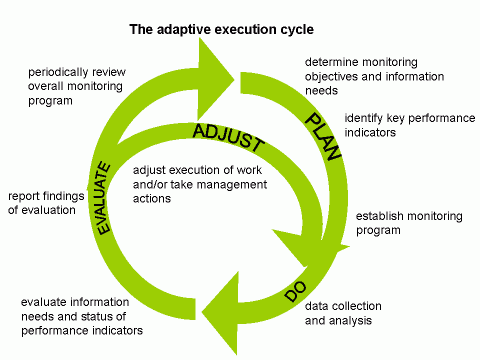Overview
Abstract: Adaptive Management Strategy can be applied to responsibly and sustainably deal with uncertainties, responding to lessons, observations and experiences during the development of the project.
Technology Readiness Level: 9 (strategy effectively used in several projects)
Landscapes: any
Keywords: Adaptive management, adaptive monitoring, uncertainties, Frame of reference, cyclic

Considering the projected demographic changes in coastal zones and river beds there will be an increasing need for dredging globally. It becomes more important to be able to satisfactorily manage the positive and negative dredging impacts on the environment and their inhabitants. A growing number of uncertainties, degraded environments, (environmental) restrictions, stakeholders and factors increasingly co-determine the programming and execution of dredging projects.
Most execution techniques, support systems and monitoring approaches accompanying infrastructure construction operations include process control and adjustments, and primarily focus on target compliance. Based on fixed knowledge they need clear thresholds to function. There is a severe lack of timely cause-effect knowledge and “business as usual” is not a viable option anymore.
A need for an applicable, structured and true adaptive management approach for the execution of marine infrastructure works has emerged, with the aim of reducing the uncertainty over time via system monitoring: i.e. an approach that aims at closing the gap to what we know and what we should know. This approach is Adaptive Management Strategy. This implies a management of the project that adapts its procedures responding to lessons, observations and experiences during the development of the project, in contrast to adhering to initially set procedures, based on on pre-project assumptions and concepts.
